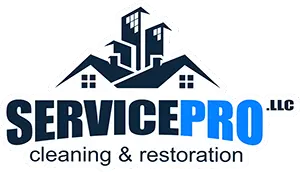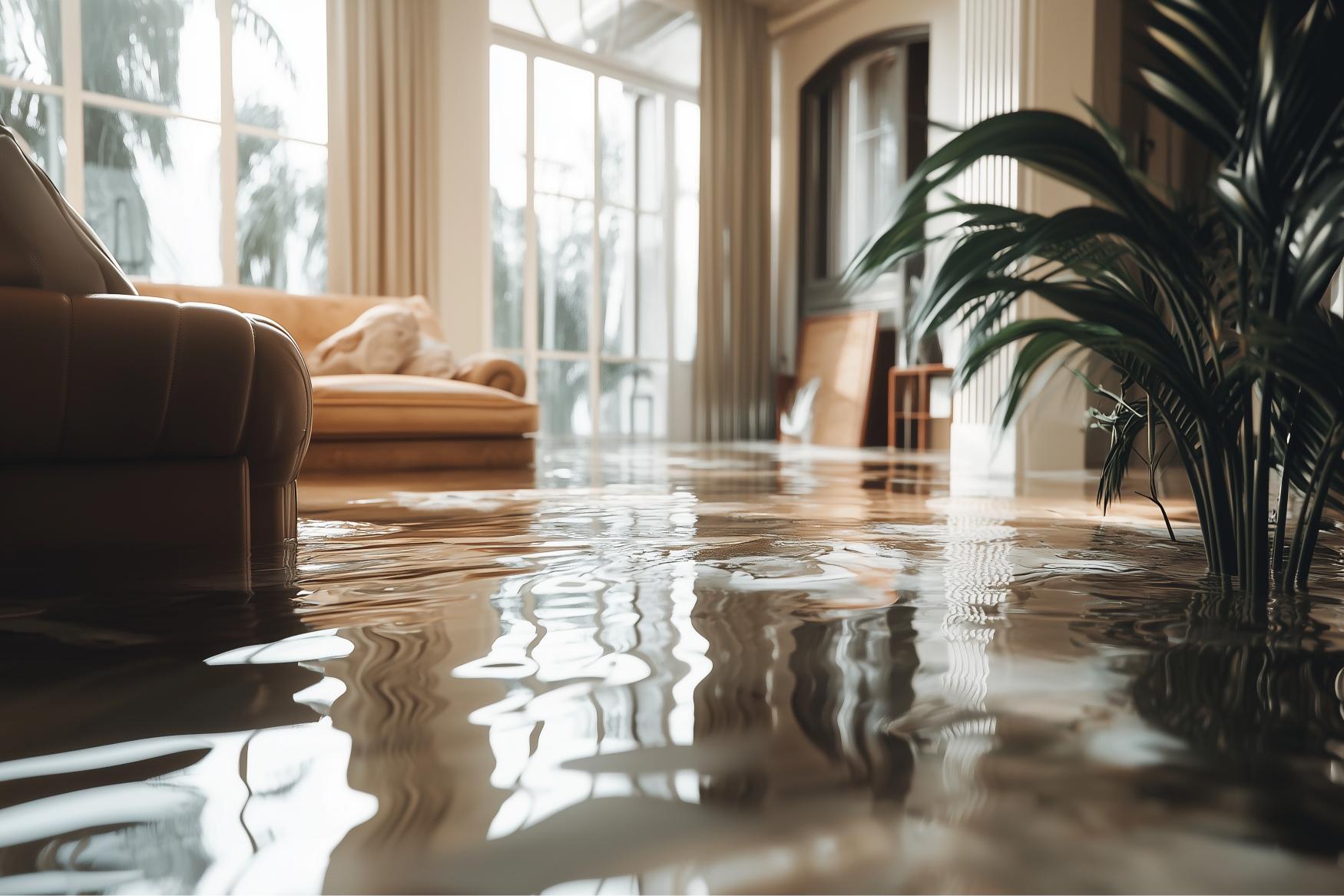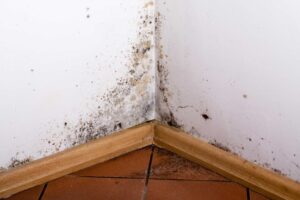Many people underestimate the urgency of flood cleanup, but acting quickly can greatly mitigate damage. You might not realize that a few hours can make a difference in preventing mold growth and structural issues. From emergency water extraction to professional remediation services, there are reliable solutions you can explore. Understanding these options helps you recover and prepares you for future challenges. What steps should you take first to ensure a thorough cleanup?
Key Takeaways
- Act quickly to remove standing water using submersible pumps and ensure thorough drying to prevent mold growth and structural damage.
- Engage professional mold remediation services for effective mold removal and prevention, ensuring safety and tailored solutions.
- Utilize DIY solutions like fans and dehumidifiers to accelerate drying while safely discarding contaminated items to mitigate health risks.
- Explore various flood insurance options, including federal and private policies, to protect against financial burdens from flooding.
- Seek reliable flood cleanup services by obtaining recommendations, reading reviews, and comparing estimates for transparency and quality.
Understanding the Importance of Immediate Flood Cleanup
When disaster strikes, you mightn’t realize how essential it is to tackle flood cleanup immediately. Delaying that response can lead to extensive damage, mold growth, and increased repair costs.
Understanding flood cleanup timelines is vital; the sooner you act, the better your chances of preserving your home and belongings.
You’re not alone in this challenging time. Many face similar struggles, and it’s important to lean on your community for support. Reach out to local resources, friends, or family who can help with the cleanup process.
Prioritize removing water, drying out affected areas, and sanitizing surfaces to prevent health risks. Make a plan that includes gathering necessary supplies and organizing your efforts.
Assessing Water Damage Severity
How can you accurately assess the severity of water damage in your home? Start by identifying key damage severity indicators.
Look for signs of discoloration or warping in walls and ceilings, which often suggest deeper issues. Check flooring materials—carpets may need replacement, while hardwood can sometimes be salvaged.
Pay attention to musty odors, as these often indicate mold growth, a serious concern for your health.
Next, inspect areas like basements and crawl spaces where water tends to accumulate.
A thorough water damage assessment involves evaluating both visible and hidden damage.
Don’t hesitate to document your findings with photos for insurance purposes.
Emergency Water Extraction Techniques
When you’re facing standing water after a flood, quick action is essential.
You’ll want to start with efficient pumping techniques to remove the water, followed by strategically using dehumidifiers to prevent further damage.
These steps can greatly reduce the risk of mold and restore your space faster.
Pumping Out Standing Water
While dealing with the aftermath of a flood can feel overwhelming, promptly pumping out standing water is essential for minimizing damage and ensuring safety.
You can start the standing water removal process by using submersible pumps, which are designed to quickly and effectively extract water. Set them up in the deepest areas first, allowing gravity to do its work. As the water level lowers, reposition the pumps to ensure complete removal.
You might find it helpful to have extra hoses on hand for better reach. Remember, every moment counts in preventing mold growth and structural damage.
Using Dehumidifiers Effectively
As you tackle the aftermath of flooding, using dehumidifiers effectively can considerably accelerate the drying process and help prevent further damage.
Choosing the right dehumidifier types and setting them to ideal settings is essential.
Refrigerant Dehumidifiers: Best for moderate climates and larger spaces.
Desiccant Dehumidifiers: Ideal for colder areas or when you need ultra-low humidity levels.
Portable Units: Great for targeting specific rooms and areas.
Whole-House Systems: Best for thorough moisture control throughout your home.
Position your dehumidifier in the most affected areas, keep doors and windows closed, and monitor humidity levels regularly.
Professional Mold Remediation Services
Because mold can develop quickly in damp environments, seeking professional mold remediation services is vital for restoring your home’s safety and comfort.
These experts understand the urgency of addressing mold growth and have the specialized training needed to tackle the issue effectively. They employ advanced remediation techniques that remove visible mold and prevent future infestations.
When you hire professionals, you gain peace of mind knowing they use safe, effective methods tailored to your specific situation. They’ll conduct thorough inspections, identify moisture sources, and treat affected areas to ensure your home is clean and healthy.
With their support, you’re not just protecting your property; you’re safeguarding your family’s well-being.
Don’t let mold compromise your sense of belonging in your home.
Professional mold remediation services are a vital step in reclaiming your space, allowing you to breathe easier and enjoy your environment again.
DIY Flood Cleanup Solutions
When disaster strikes and flooding occurs, knowing how to tackle the cleanup on your own can empower you to restore your home efficiently.
Here are some DIY flood cleanup solutions to help you regain control:
Assess the Damage: Take a careful look at the affected areas and make a list of what needs attention.
Remove Contaminated Items: Safely discard any water-damaged belongings to prevent mold growth.
Dry Out Your Space: Use fans and dehumidifiers to eliminate moisture and speed up the drying process.
Implement Flood Prevention Measures: Consider installing water barriers like sandbags to protect your home from future flooding.
Equipment Needed for Effective Cleanup
When tackling flood cleanup, having the right equipment can make all the difference in restoring your space.
You’ll want effective water extraction tools to remove standing water quickly, followed by drying equipment to prevent mold and further damage.
Let’s explore the essential tools that will help you get your home back to normal.
Water Extraction Tools
Water extraction tools are essential for tackling the aftermath of a flood, ensuring your space returns to normal as quickly as possible.
Using the right equipment can greatly aid in flood restoration, reducing damage and preventing mold growth. Here’s what you’ll need:
- Submersible Pumps: Efficiently remove standing water.
- Wet/Dry Vacuums: Perfect for smaller areas and residual moisture.
- Water Extraction Mats: Help pull moisture from carpets and floors.
- Hoses and Attachments: Essential for reaching tight spaces and maximizing extraction.
Having these tools on hand means you’re better equipped to handle the challenges of water extraction.
You’re not alone in this process; with the right equipment, you’ll restore your home and peace of mind sooner than you think.
Drying Equipment Necessities
After successfully extracting water, the next step in your flood cleanup is drying out your space effectively.
Using the right drying techniques is vital for preventing mold and further damage. Invest in high-capacity fans and dehumidifiers; they’ll help circulate air and remove moisture efficiently.
Make certain to focus on hard-to-reach areas, as stagnant water can hide there. Regular equipment maintenance is necessary; check filters and verify your machines are functioning properly.
Don’t forget to ventilate your space by opening windows and doors when possible. This combination of equipment and care will create a safe environment for you and your loved ones.
Together, you can tackle the aftermath and restore your home to its former comfort.
Safety Precautions During Flood Cleanup
Although the aftermath of a flood can feel overwhelming, prioritizing safety during cleanup is essential to protect yourself and others.
Before diving into the work, make sure you take the necessary precautions to minimize risks. Wearing protective gear is a must; it helps shield you from contaminants. Additionally, electrical safety is vital—never wade into standing water if you suspect downed power lines.
Here are some key safety tips to keep in mind:
- Wear waterproof boots, gloves, and masks to avoid exposure.
- Turn off the electricity at the main breaker before entering flooded areas.
- Use battery-operated lights instead of candles to reduce fire hazards.
- Keep a first-aid kit on hand in case of minor injuries.
Insurance and Financial Considerations
When facing the aftermath of a flood, understanding your insurance coverage is essential for your recovery.
You’ll want to explore flood insurance options and any financial assistance programs that might be available to you.
Guiding through these resources can help ease the financial burden and get you back on your feet more quickly.
Flood Insurance Coverage Options
How can you ensure your home is protected from the financial burdens of flooding? Understanding flood insurance coverage options is essential.
You’ll want to explore various flood policy options that suit your needs and budget. Here are some key points to take into account:
Federal Flood Insurance: A government-backed option that covers many scenarios.
Private Flood Insurance: Offers flexibility and potentially higher coverage limits.
Replacement Cost vs. Actual Cash Value: Know what you’ll receive in the event of a claim.
Additional Living Expenses: Coverage for temporary lodging if your home is uninhabitable.
Financial Assistance Programs Available
What financial assistance programs can help you recover from the aftermath of a flood? You have several options to explore, including federal grants and state assistance programs that can ease your financial burden. Here’s a quick overview:
| Program Type | Description |
|---|---|
| Federal Grants | Funds for home repairs and recovery |
| State Assistance | Local resources tailored to your needs |
| Low-Interest Loans | Affordable financing for rebuilding |
| Nonprofit Aid | Support from organizations dedicated to recovery |
| Community Programs | Local initiatives providing direct help |
Long-Term Prevention Strategies
While flooding can feel overwhelming and unpredictable, implementing long-term prevention strategies can greatly mitigate its impact on your property and peace of mind.
By taking proactive measures, you can create a safer environment for yourself and your loved ones. Consider these effective strategies:
- Install flood barriers around your property to redirect water away.
- Invest in reliable drainage systems to manage rainwater effectively.
- Elevate electrical systems and appliances to prevent damage.
- Regularly inspect and maintain gutters and downspouts.
Each step you take protects your home and fosters a sense of community resilience.
Sharing your experiences and solutions with neighbors can create a supportive network that helps everyone feel more secure.
Finding Reliable Flood Cleanup Services
When disaster strikes and your home is flooded, finding reliable cleanup services can feel overwhelming. You deserve support that understands your situation, so start by asking friends and neighbors for local service recommendations. They often have firsthand experiences that can guide you toward trustworthy options.
Next, take time to read contractor reviews. Look for feedback that highlights punctuality, professionalism, and quality of work. Reviews can reveal the strengths of a service, and any potential red flags.
Don’t hesitate to reach out to multiple contractors to discuss your needs and get estimates. A reputable service will listen to your concerns and provide clear, transparent pricing.
Recap
When disaster strikes, how prepared are you to tackle the aftermath of flooding? Quick action is key to minimizing damage and ensuring safety. By utilizing reliable water extraction methods, seeking professional mold remediation, and implementing effective prevention strategies; you can reclaim your space with confidence. Remember, you’re not alone in this process—there are resources and services available to help you navigate the challenges ahead. Stay proactive, and protect your home for the future.




